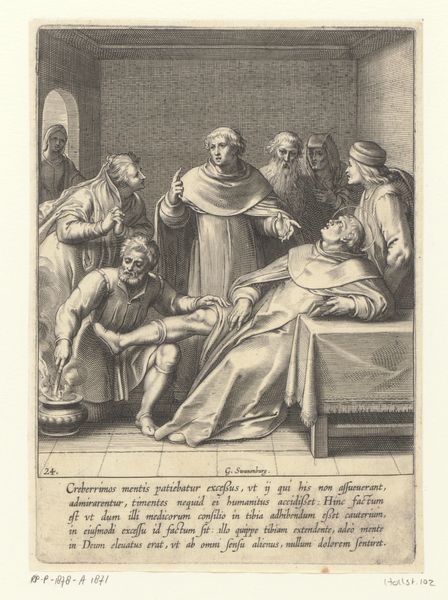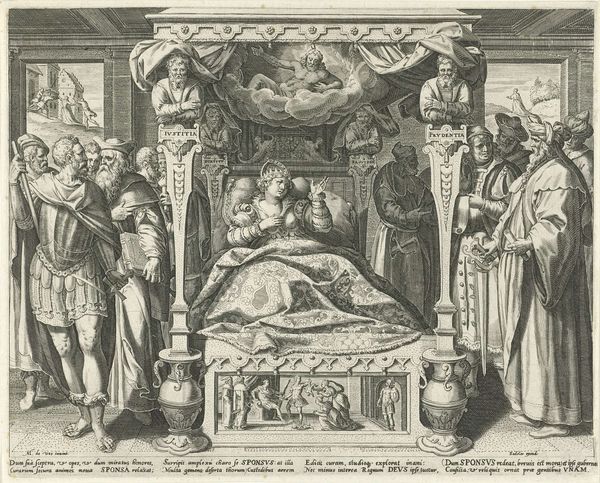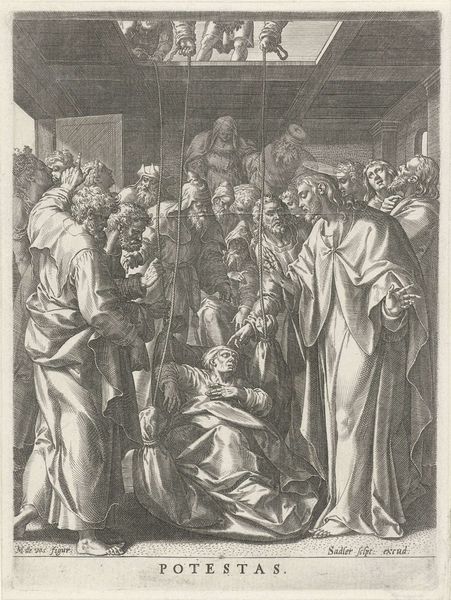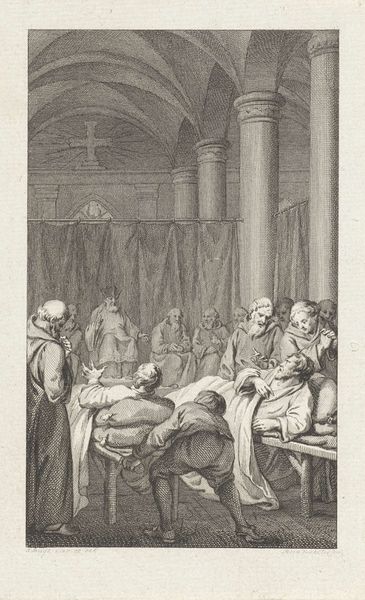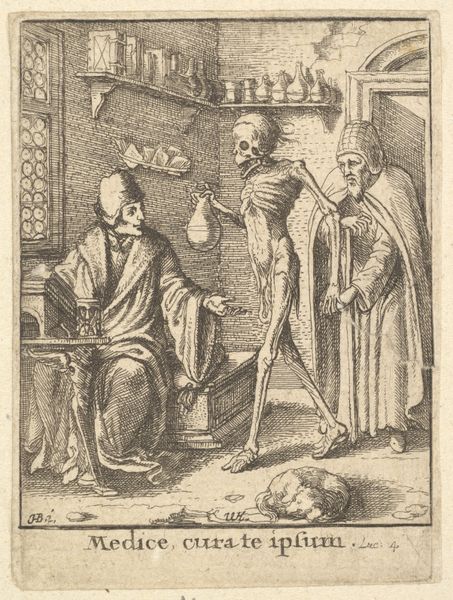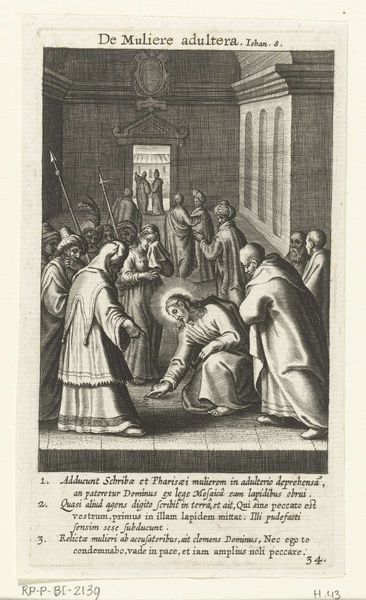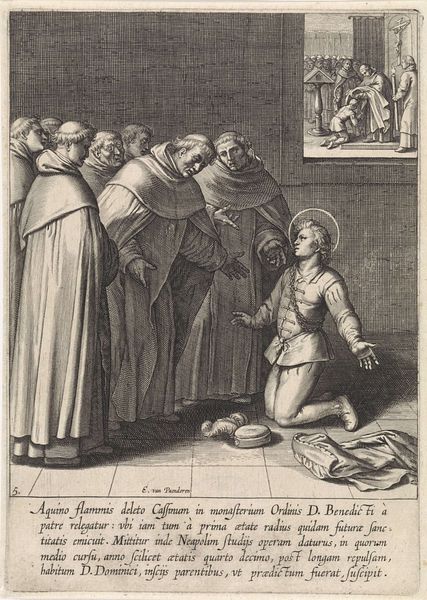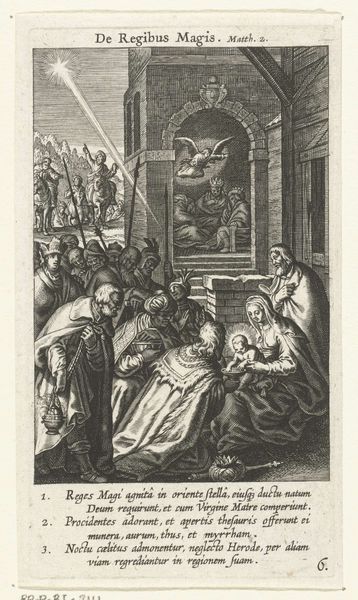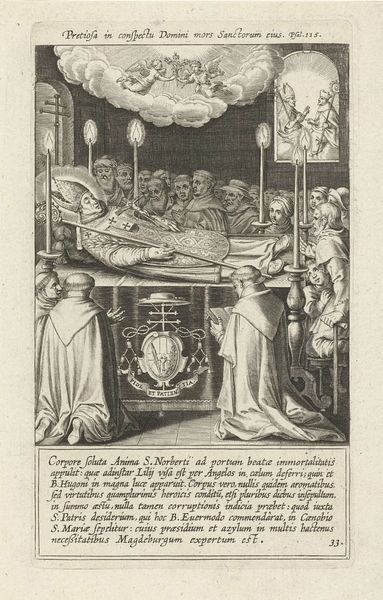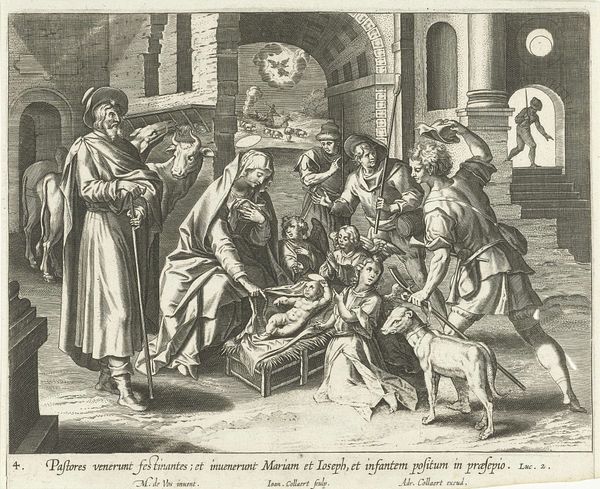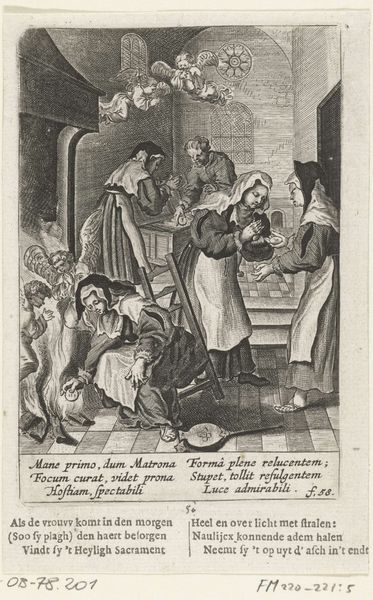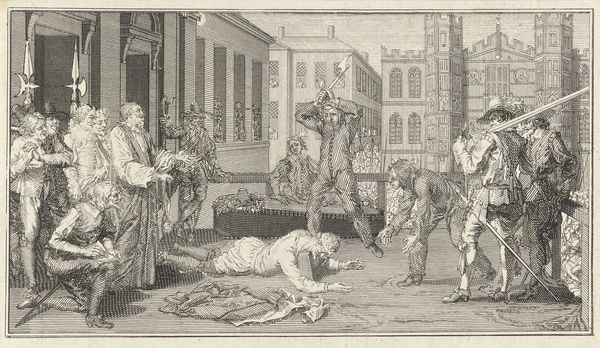
Niels Klim Attends the Sentencing of the Deceased Potuan Prince. 1785 - 1787
0:00
0:00
Dimensions: 42.5 cm (height) x 35.5 cm (width) (Netto), 51.2 cm (height) x 44.9 cm (width) (Brutto)
Curator: This oil on canvas is entitled "Niels Klim Attends the Sentencing of the Deceased Potuan Prince" by Nicolai Abildgaard, created between 1785 and 1787. It's currently part of the collection at the SMK, the National Gallery of Denmark. Editor: Wow, what a dramatic scene! I'm immediately struck by the somber mood—almost gothic in its darkness. Everyone's gathered around this…inert figure, looking quite serious. Curator: Indeed. Abildgaard draws from history painting traditions and genre painting to create this rather unique piece. The themes in the picture open up into questions around political power and judgement of political elites, and perhaps their social fallibility after death. Editor: The lighting really emphasizes that tension, doesn't it? All those shadowy figures lurking in the background, while this dead prince is highlighted. It gives it this uncanny feeling of a stage play—like we’re witnessing some symbolic ceremony. Curator: That interpretation rings true. I see Abildgaard attempting to leverage art history here, employing visual and symbolic language for allegorical critique, holding a mirror up to societal imbalances and perhaps even commenting on his time's political events. Editor: And isn’t it strange? The longer I look at it, the more the faces become, like, these caricatures of authority, peering at the prince’s body as though expecting answers, which, obviously, he can’t give anymore! A delicious kind of futility there, that speaks, ironically, volumes about the pitfalls of holding sway. Curator: The composition definitely points toward these power dynamics, but also considers broader themes linked to mortality, accountability, and legacy, which of course can take on various interpretations depending on the political and social climate of the period under consideration. Editor: It’s pretty impressive to see that Abildgaard has embedded layers of depth in a fairly simple scenario! Who knows, perhaps he meant to jolt people to reflect critically about power, using the canvas as his mouthpiece… almost seditiously. Well, thank goodness for canvases that roar beyond their own era. Curator: I think it's fascinating to reflect on those intersectional possibilities when we contemplate artworks like this. Editor: Absolutely, it seems art’s never just what it looks like on the surface, right?
Comments
No comments
Be the first to comment and join the conversation on the ultimate creative platform.
